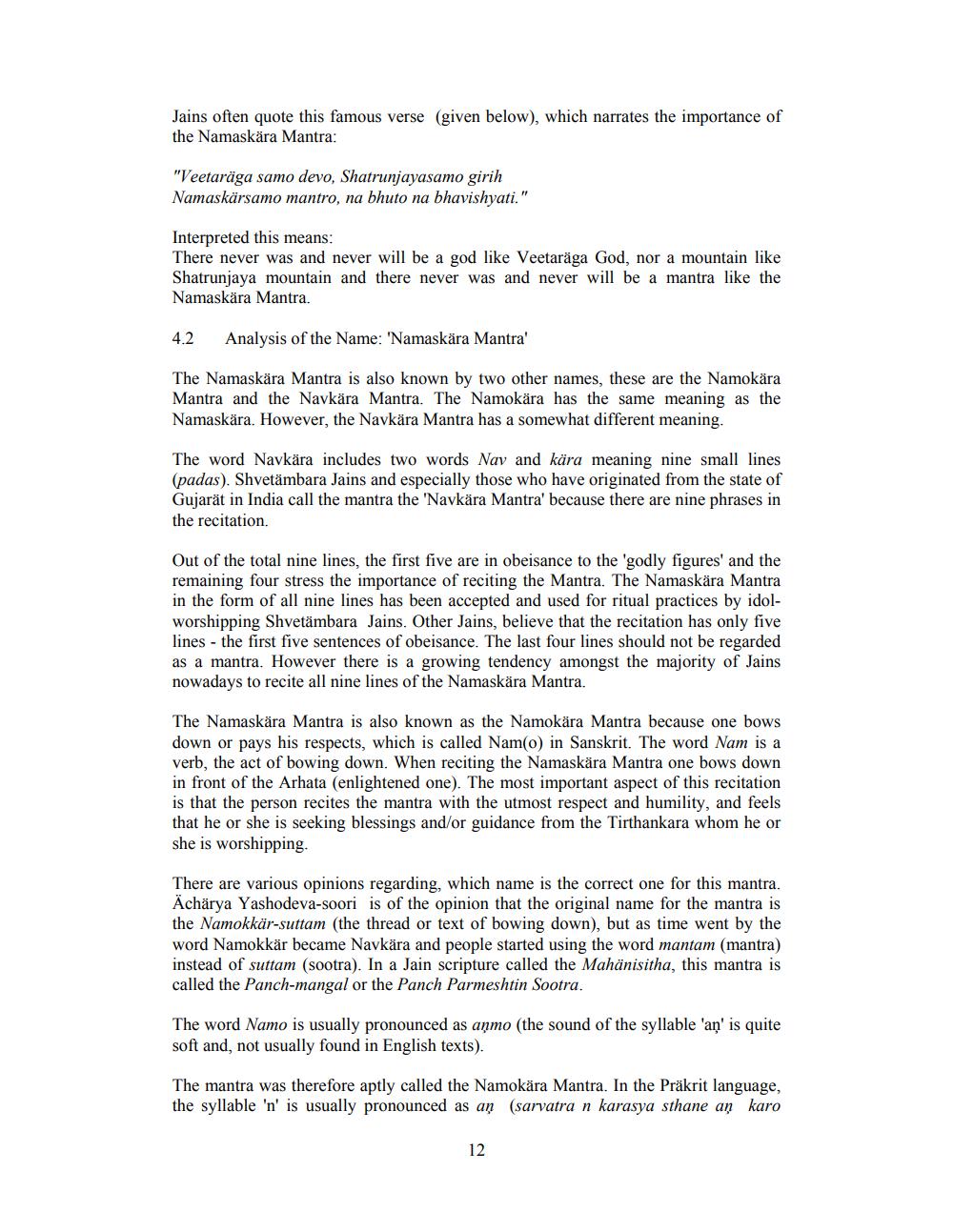________________
Jains often quote this famous verse (given below), which narrates the importance of the Namaskära Mantra:
"Veetaräga samo devo, Shatrunjayasamo girih Namaskärsamo mantro, na bhuto na bhavishyati."
Interpreted this means: There never was and never will be a god like Veetaräga God, nor a mountain like Shatrunjaya mountain and there never was and never will be a mantra like the Namaskara Mantra.
4.2
Analysis of the Name: 'Namaskära Mantra'
The Namaskära Mantra is also known by two other names, these are the Namokara Mantra and the Navkära Mantra. The Namokära has the same meaning as the Namaskära. However, the Navkära Mantra has a somewhat different meaning.
The word Navkära includes two words Nav and kära meaning nine small lines (padas). Shvetämbara Jains and especially those who have originated from the state of Gujarät in India call the mantra the 'Navkära Mantra' because there are nine phrases in the recitation.
Out of the total nine lines, the first five are in obeisance to the 'godly figures' and the remaining four stress the importance of reciting the Mantra. The Namaskära Mantra in the form of all nine lines has been accepted and used for ritual practices by idolworshipping Shvetämbara Jains. Other Jains, believe that the recitation has only five lines - the first five sentences of obeisance. The last four lines should not be regarded as a mantra. However there is a growing tendency amongst the majority of Jains nowadays to recite all nine lines of the Namaskära Mantra.
The Namaskära Mantra is also known as the Namokära Mantra because one bows down or pays his respects, which is called Nam(o) in Sanskrit. The word Nam is a verb, the act of bowing down. When reciting the Namaskära Mantra one bows down in front of the Arhata (enlightened one). The most important aspect of this recitation is that the person recites the mantra with the utmost respect and humility, and feels that he or she is seeking blessings and/or guidance from the Tirthankara whom he or she is worshipping.
There are various opinions regarding, which name is the correct one for this mantra. Ächärya Yashodeva-soori is of the opinion that the original name for the mantra is the Namokkär-suttam (the thread or text of bowing down), but as time went by the word Namokkär became Navkära and people started using the word mantam (mantra) instead of suttam (sootra). In a Jain scripture called the Mahänisitha, this mantra is called the Panch-mangal or the Panch Parmeshtin Sootra.
The word Namo is usually pronounced as anmo (the sound of the syllable 'an' is quite soft and, not usually found in English texts).
The mantra was therefore aptly called the Namokära Mantra. In the Präkrit language, the syllable 'n' is usually pronounced as an (sarvatra n karasya sthane aņ karo




